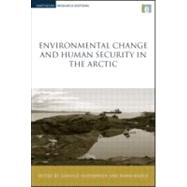Environmental and Human Security in the Arctic
, by Gjorv, Gunhild Hoogensen; Bazely, Dawn R.; Goloviznina, Marina; Tanentzap, Andrew J.- ISBN: 9781844075492 | 1844075494
- Cover: Hardcover
- Copyright: 10/1/2013
Over centuries, Arctic peoples have learned to adapt and thrive in an uncertain, harsh environment. Presently change is occurring in this region at an unprecedented rate, placing an immense strain on the many factors that are necessary for human well-being or contribute towards human security, such as the health of the environment, identity of peoples, supply of traditional foods, community health, economic opportunities, and political stability. While the traditional language of security has already been actively employed in the Arctic region for decades, largely with respect to natural resource sovereignty issues, how and why should the human aspect be introduced? What also might the experience of those in the Arctic--often portrayed as the "canary in the mine" of global change--teach us about human security in the wider world? This book is the first comprehensive exploration of why human security is relevant to the Arctic and what achieving it can mean. The contributors (from Canada, Russia, Ukraine, Finland and Norway) are a collection of natural, social and humanities scientists, and their research ranges from climate change and pollutants to disease, gender issues and indigenous identities. It eschews the classic top-down (state-centric) view, instead taking a multi-disciplinary approach that allows non-dominant groups (e.g. women, indigenous peoples, Arctic researchers) to share their experiences, perceptions, and capabilities. The result is a powerful document that not only reviews the potential threats to security but also situates them in an analytical framework and indicates a clear path for solutions. It is essential reading for policy-makers, community groups, researchers and students concerned with human security in general, and the Arctic in particular.







